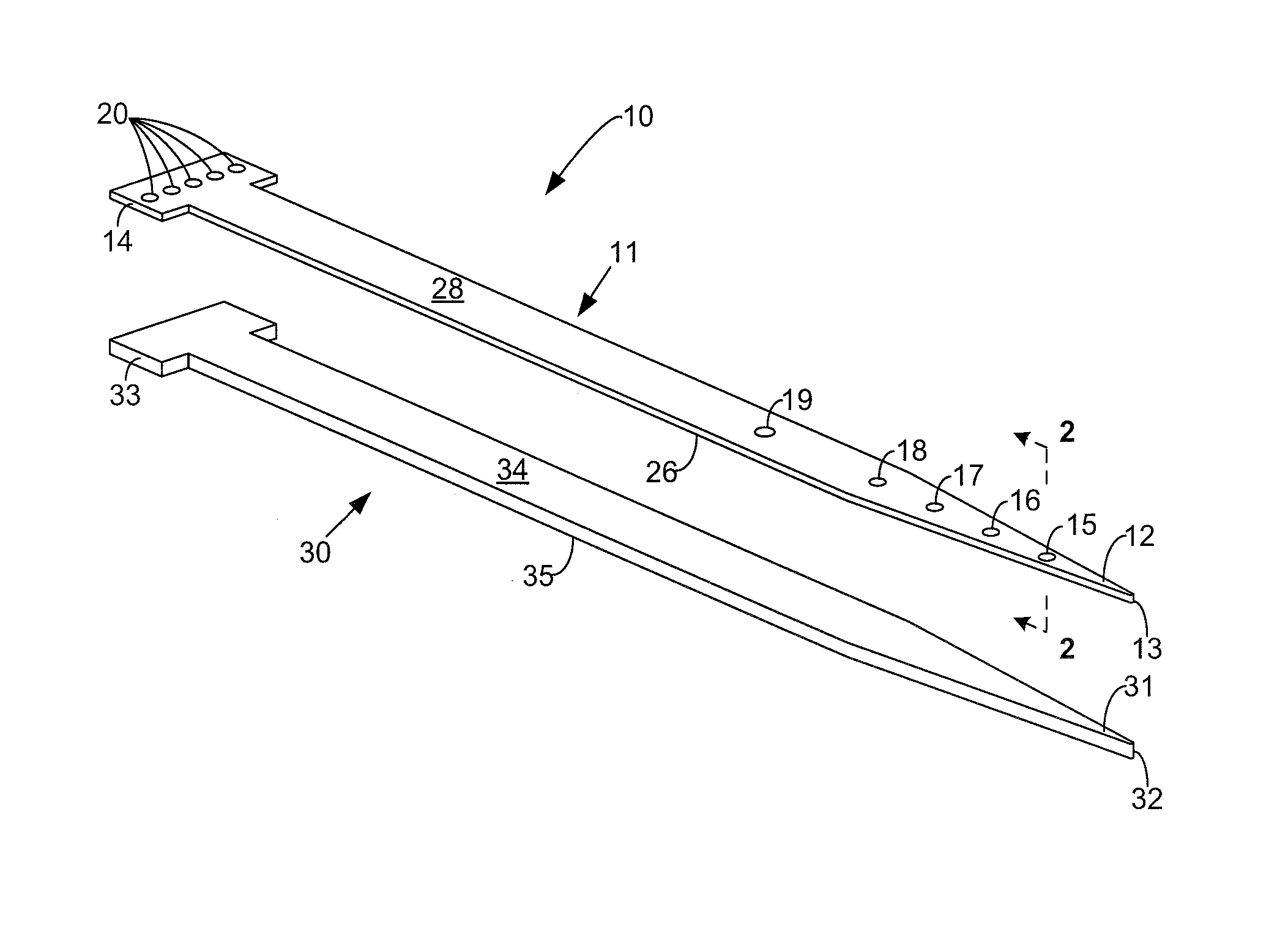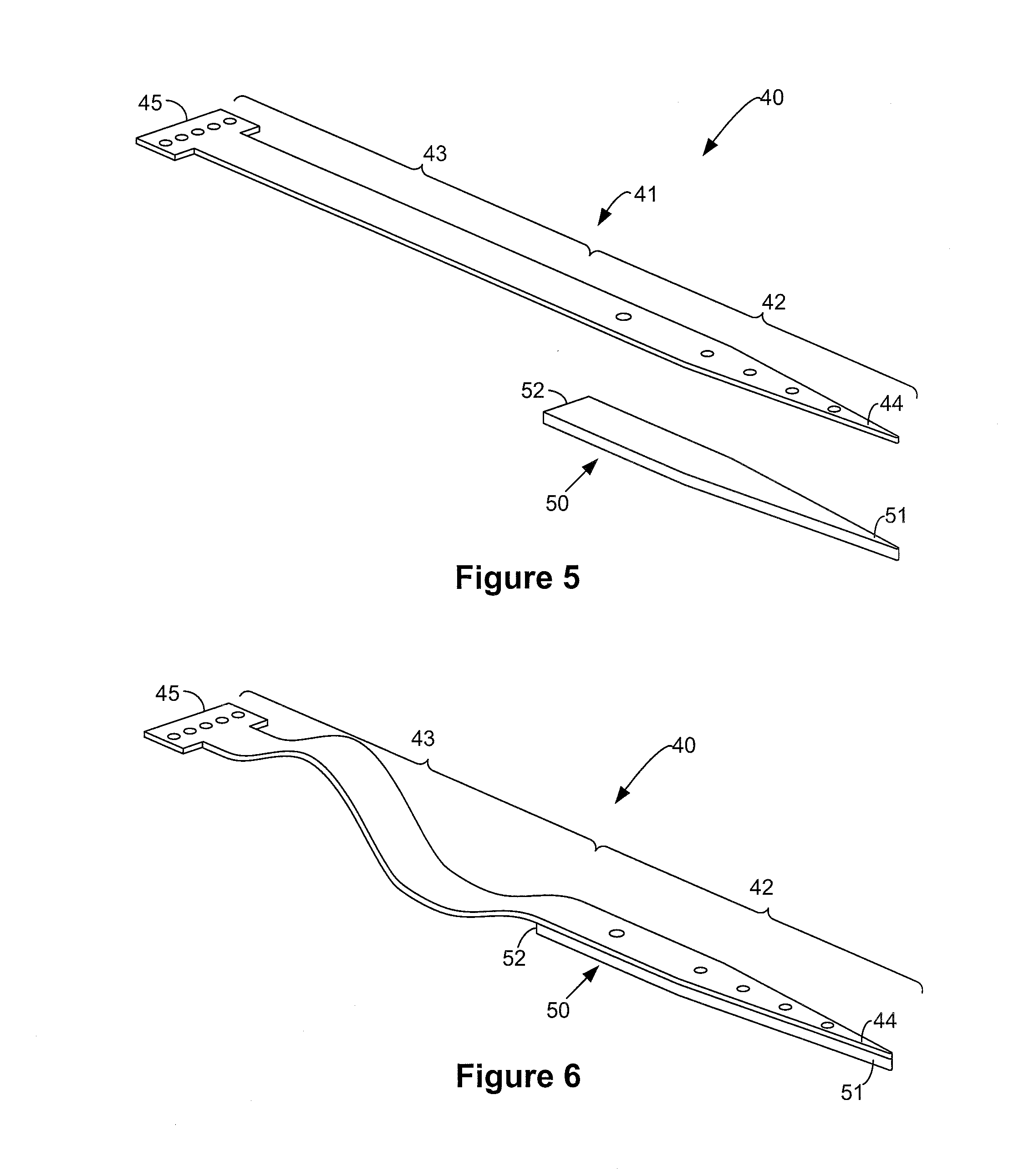Rigid spine reinforced polymer microelectrode array probe and method of fabrication
a technology of rigid spine and array probe, which is applied in the field of thin film microprobes and fabrication methods, can solve the problems of small pieces of silicon that might remain in and damage neural tissue or migrate down into the brain, and significant damage to surrounding tissue, so as to avoid the effect of affecting the use of silicon, the effect of reducing the risk of injury
- Summary
- Abstract
- Description
- Claims
- Application Information
AI Technical Summary
Benefits of technology
Problems solved by technology
Method used
Image
Examples
Embodiment Construction
[0033]Turning now to the drawings, FIG. 1 shows an exploded isometric view of a first exemplary embodiment of the spine-reinforced microelectrode array probe of the present invention, generally indicated at reference character 10. The probe is shown as a single shank probe, having two main components, (1) an elongated probe body 11 which has an electrically-insulating material construction enclosing a plurality of conductive lines (and therefore also characterizable as an insulating probe body, a polymeric probe body if insulating polymers are used, or a flexible probe body if elastomeric insulating materials are used), and (2) a rigid spine (also characterized as an insertion shank) 30. Both the probe body 11 and the rigid spine 30 have an elongated configuration extending between respective opposing ends. In particular, the probe body 11 has an insertion end 12 with a pointed insertion tip 13 and an opposite connector end 14, and the rigid spine 30 has an insertion end 31 with a p...
PUM
 Login to View More
Login to View More Abstract
Description
Claims
Application Information
 Login to View More
Login to View More - R&D
- Intellectual Property
- Life Sciences
- Materials
- Tech Scout
- Unparalleled Data Quality
- Higher Quality Content
- 60% Fewer Hallucinations
Browse by: Latest US Patents, China's latest patents, Technical Efficacy Thesaurus, Application Domain, Technology Topic, Popular Technical Reports.
© 2025 PatSnap. All rights reserved.Legal|Privacy policy|Modern Slavery Act Transparency Statement|Sitemap|About US| Contact US: help@patsnap.com



